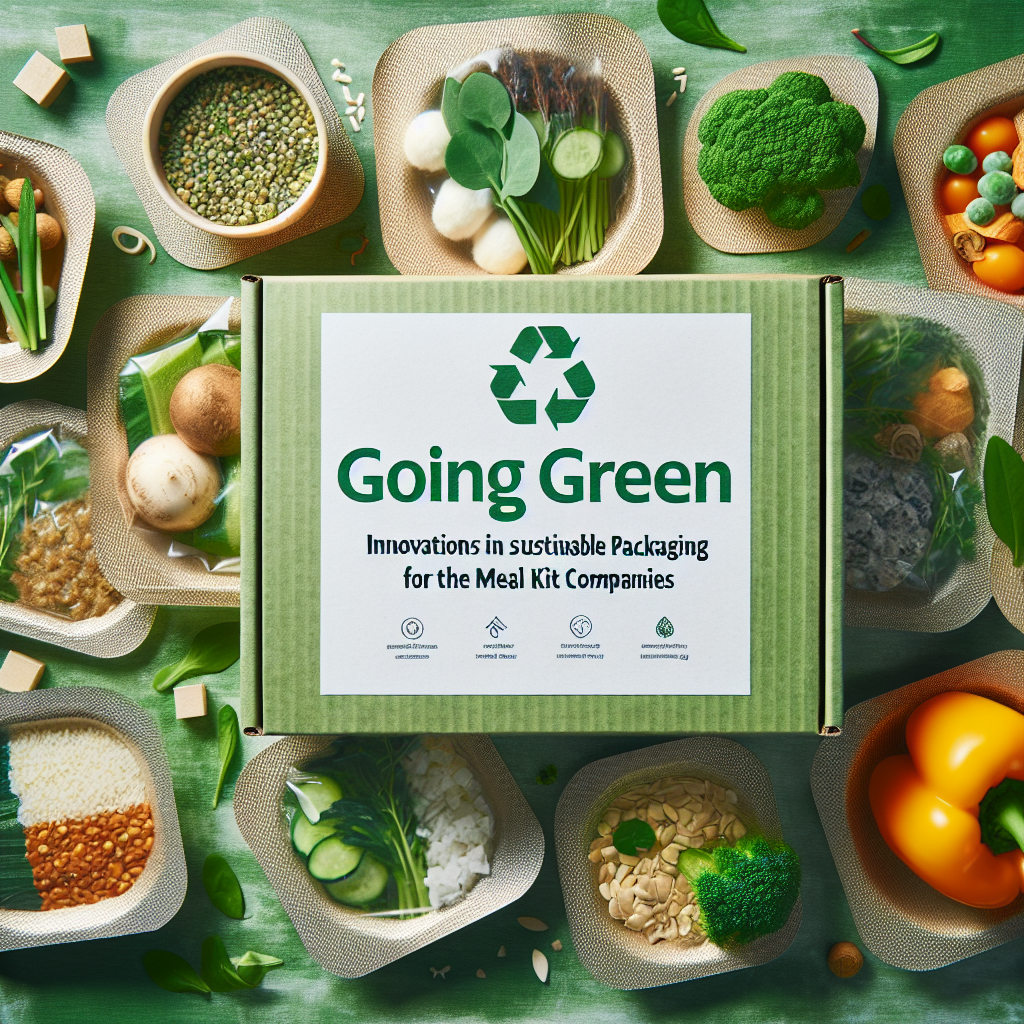In recent years, the meal kit industry has exploded in popularity. With busy lifestyles and a growing interest in home cooking, meal kits offer a convenient solution for many. However, it’s not just the recipes and ingredients that are evolving; the packaging is too. As consumers become increasingly conscious of environmental issues, meal kit companies are prioritizing sustainability in their packaging. Let’s explore the innovations in sustainable packaging that are reshaping this industry.
The Need for Change: Understanding the Environmental Impact
The food delivery sector creates a staggering amount of waste. Traditional packaging materials—plastics, Styrofoam, and aluminum—often end up in landfills, contributing to pollution and greenhouse gas emissions. Meal kit companies recognize their responsibility to mitigate this impact. They’re embracing sustainable practices not only for the planet but to resonate with eco-minded consumers.
Eco-Friendly Packaging: What Does It Mean?
Sustainable packaging refers to materials that have a reduced environmental impact. This can include packaging made from recycled, biodegradable, or compostable materials. The aim is to minimize pollution and promote recycling and reuse. Additionally, sustainable packaging is often designed to be lighter and more efficient in terms of transportation, further reducing a company’s carbon footprint.
Innovative Materials: The Future of Meal Kit Packing
1. Plant-Based Plastics
Many companies are now utilizing plant-based plastics made from renewable resources such as cornstarch, sugarcane, or other agricultural by-products. These biodegradable alternatives break down more easily than traditional plastics, which can take centuries to decompose. Brands like Green Chef are leading the way with this innovation, making significant strides in reducing their plastic footprint.
2. Compostable Packaging
Another game-changing innovation in sustainable meal kit packaging is compostable materials that can decompose naturally after use. For instance, HelloFresh has begun incorporating compostable bags made from cellulose, which can be thrown into a compost bin instead of a landfill. This not only reduces waste but also contributes nutrients back into the soil.
3. Recycled Paper and Cardboard
Recycled paper and cardboard packaging is becoming a staple in the meal kit world. With a focus on recyclable materials, companies like Sun Basket are looking to reduce their environmental impact. By using materials sourced from recycled products, these companies can significantly lower their carbon emissions.
The Role of Supply Chain Transparency
Sustainability doesn’t end with packaging; it extends to the entire supply chain. Consumers are increasingly seeking transparency about how their food is sourced and packaged. Meal kit companies are stepping up by providing detailed information on their ingredient sourcing, packaging materials, and the sustainability of their operations. Companies like Purple Carrot emphasize their commitment to transparency in their marketing, encouraging consumers to make informed choices.
Consumer Engagement: The Human Element
Gone are the days when consumers were passive recipients. Today’s consumers want to feel connected to the brands they support. Meal kit companies are harnessing this sentiment by engaging customers in their sustainability journey. From social media campaigns highlighting their eco-friendly initiatives to interactive recycling programs, brands like Blue Apron are successfully building a community around sustainability.
Building a Community Around Sustainability
Meal kit companies are also taking the opportunity to educate their consumers about sustainable practices. Providing tips on how to recycle or reuse packaging materials can empower customers to make better choices at home. This connection transforms consumers from buyers into advocates for sustainability, creating a loyal customer base that’s invested in their mission.
The Future is Bright: Trends to Watch
As awareness of environmental issues continues to rise, the demand for sustainable packaging will only increase. Here are a few trends to keep an eye on:
-
Increased Adoption of Smart Packaging: With the rise of technology, companies are exploring intelligent packaging solutions that can inform consumers about how to properly dispose of the product.
-
Collaboration with Environmental Organizations: Partnerships between meal kit companies and environmental organizations can enhance credibility and reinforce commitment to sustainability.
- Innovations in Shipping: Reducing the carbon footprint associated with delivery through optimized logistics and eco-friendly vehicles is becoming a primary focus.
Conclusion: A Collective Responsibility
As we navigate the evolving landscape of meal kits, one thing is clear: the journey toward sustainable packaging isn’t just about the companies—it’s about all of us. Every time you choose a meal kit with sustainable packaging, you make a choice for the planet. By supporting these innovations, you encourage a shift toward a more environmentally responsible industry.
In embracing industry advancement, meal kit companies are not only addressing their environmental responsibilities but are also fostering a culture of sustainability that resonates deeply with consumers. So, the next time you unwrap your meal kit, take a moment to appreciate the thought and innovation that went into its packaging—because going green takes all of us, and the future of food delivery is brighter than ever.


